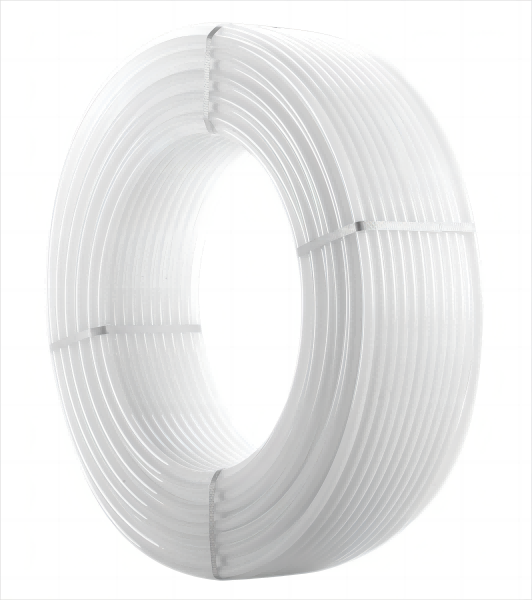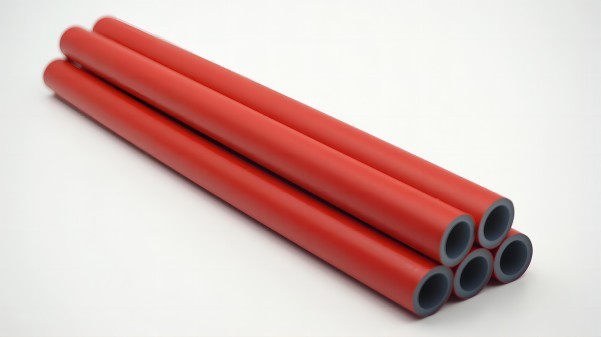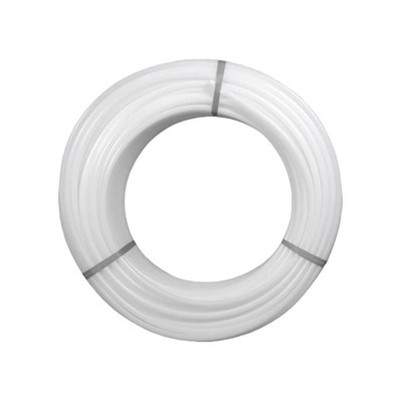Is a 16mm PEX pipe flexible?
Leave a message
Is a 16mm PEX pipe flexible?
As a supplier of 16mm PEX pipes, I often get asked about the flexibility of these pipes. PEX, or cross - linked polyethylene, is a type of plastic tubing that has gained widespread popularity in plumbing and heating systems over the past few decades. In this blog post, I'll delve into the flexibility of 16mm PEX pipes, exploring the factors that influence it and its practical implications.
Understanding PEX Pipe Flexibility
PEX pipes are known for their inherent flexibility, and the 16mm size is no exception. The cross - linking process used to manufacture PEX pipes creates a molecular structure that gives the material its unique properties. Unlike traditional rigid pipes such as copper or PVC, PEX pipes can be bent and shaped without the need for numerous fittings.
The flexibility of a 16mm PEX pipe allows for easier installation in tight spaces. For instance, in retrofit projects where access is limited, a flexible pipe can be maneuvered around obstacles such as joists, studs, and other building components. This reduces the amount of cutting and fitting required, which in turn saves time and labor costs during installation.
Factors Affecting Flexibility
Temperature
Temperature plays a significant role in the flexibility of PEX pipes. Generally, PEX pipes become more flexible at higher temperatures. When the ambient temperature rises, the molecules in the PEX material have more energy and can move more freely, making the pipe easier to bend. Conversely, at lower temperatures, the pipe becomes stiffer.
For example, in cold climates, it may be necessary to warm the PEX pipe slightly before attempting to bend it. This can be done using a heat gun set to a low temperature. However, care must be taken not to overheat the pipe, as excessive heat can damage the cross - linked structure of the PEX.
Cross - Linking Type
There are three main types of cross - linking used in PEX pipe manufacturing: PEX - a, PEX - b, and PEX - c. Among these, PEX - a typically offers the highest degree of flexibility. The manufacturing process for PEX - a results in a more uniform and highly cross - linked molecular structure, which allows the pipe to bend more easily without kinking.
Our PE - Xa Pipe for Plumbing Pipe is a prime example of a high - quality PEX - a pipe. It is designed to provide excellent flexibility, making it suitable for a wide range of plumbing applications.
Wall Thickness
The wall thickness of a 16mm PEX pipe also affects its flexibility. Thicker - walled pipes are generally less flexible than thinner - walled ones. While thicker walls may offer increased durability and pressure resistance, they can make the pipe more difficult to bend. When selecting a 16mm PEX pipe, it's important to consider the specific requirements of your project. If flexibility is a priority, a thinner - walled pipe may be the better choice.


Practical Applications of Flexibility
Residential Plumbing
In residential plumbing systems, the flexibility of 16mm PEX pipes is a major advantage. They can be used for both hot and cold water distribution. For example, when installing a new bathroom or kitchen, the pipes can be easily routed under floors, through walls, and around corners without the need for complex plumbing configurations.
The flexibility also allows for easy connection to fixtures such as sinks, toilets, and showers. Since PEX pipes can be bent to fit the available space, they can be installed in a more aesthetically pleasing and space - efficient manner.
Radiant Heating Systems
16mm PEX pipes are commonly used in radiant heating systems. In these systems, the pipes are installed beneath the floor or within the walls to provide a comfortable and energy - efficient heating solution. The flexibility of the PEX pipes makes it possible to create a serpentine pattern in the floor, ensuring even heat distribution.
The ability to bend the pipes without kinking is crucial in radiant heating applications. Kinks can restrict the flow of hot water through the pipes, reducing the efficiency of the heating system. Our PE - Xa Pipe NSF meets the necessary standards for use in radiant heating systems, providing both flexibility and reliability.
Testing and Quality Assurance
As a supplier, we understand the importance of providing high - quality 16mm PEX pipes. Our pipes undergo rigorous testing to ensure they meet the required standards for flexibility and other properties.
We test the pipes for bend radius, which is the minimum radius to which a pipe can be bent without kinking. Our 16mm PEX pipes have a small bend radius, indicating excellent flexibility. Additionally, we test the pipes for resistance to environmental stress cracking, which can affect the long - term performance of the pipe.
Our PE - Xa Pipe Watermark is a mark of quality and compliance. It indicates that our PEX - a pipes have passed the necessary tests and meet the relevant industry standards.
Conclusion
In conclusion, a 16mm PEX pipe is indeed flexible, and this flexibility offers numerous benefits in plumbing and heating applications. The factors such as temperature, cross - linking type, and wall thickness can affect the degree of flexibility, but with proper handling and selection, 16mm PEX pipes can be easily installed in a variety of settings.
If you are in need of high - quality 16mm PEX pipes for your next project, we are here to help. Our range of PEX pipes, including the PEX - a options, provides excellent flexibility, durability, and performance. We invite you to contact us to discuss your specific requirements and start a procurement negotiation. We are committed to providing you with the best products and services to meet your needs.
References
- ASTM International. (Year). Standard Specification for Cross - Linked Polyethylene (PEX) Tubing.
- International Association of Plumbing and Mechanical Officials. (Year). Plumbing Code Handbook.




